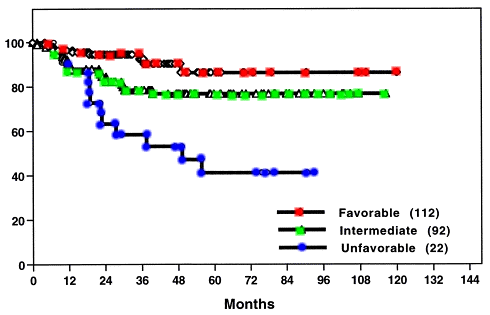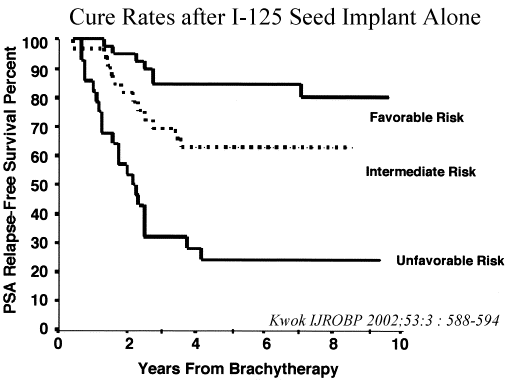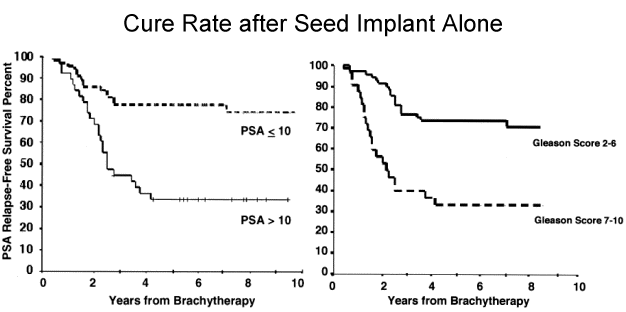| A recent study form the U of Maryland found similar results for seeds
only by risk group The risk groups were favorable (Stage T1-2a, pretreatment PSA up
to 10.0 ng/mL, and Gleason score up to 6), intermediate (one of the favorable indicators
with a greater value), and unfavorable 2 or more of the favorable indicators with a
greater value).The 5-year actuarial PRFS rate for the favorable, intermediate, and
unfavorable risk groups was 85%, 63%, and 24%, respectively (see graph) The 5-year
actuarial overall survival rate for the favorable, intermediate, and unfavorable risk
groups was 90%, 79%, and 85%, respectively. So in other words, at 5 years a patient
with a PSA of greater than 10 and a Gleason 7 will still be alive (85% survival) but a
seed implant alone the odds that he has been cured (i.e. a PSA less than 1 and stable) was
only 24%. So these high risk patients need more than an implant alone (i.e. external beam
+/- Leupron) along with the implant |


